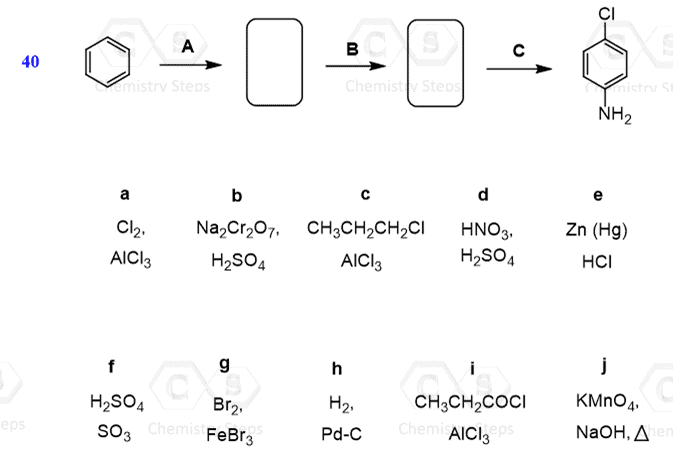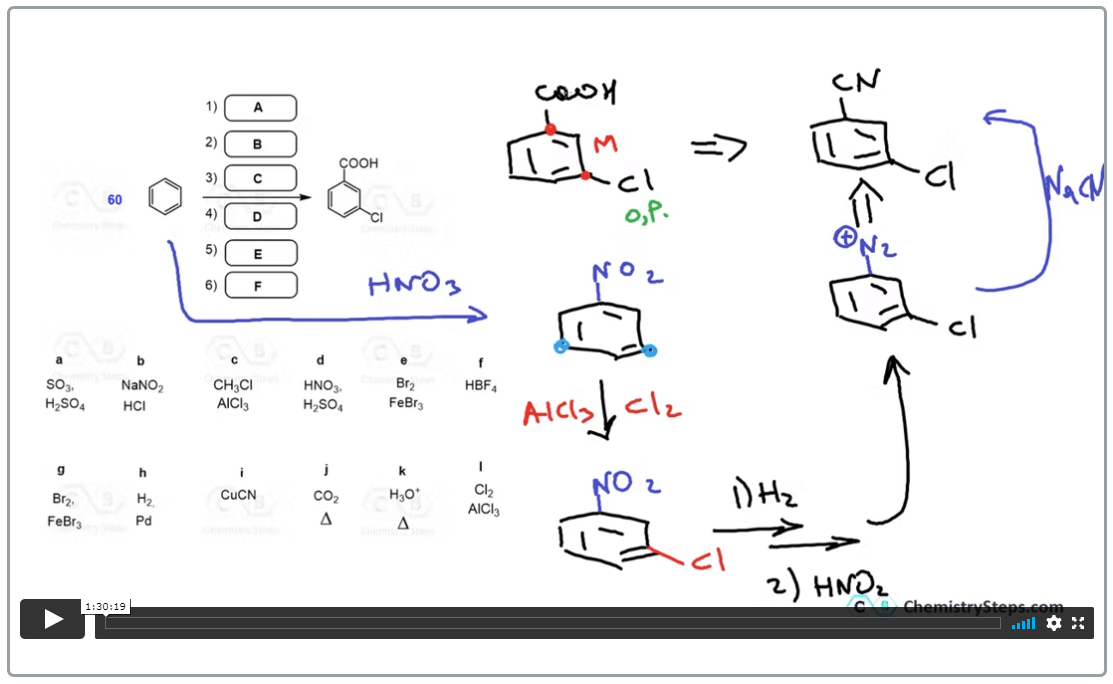This is a Multiple-Choice quiz to practice the Naming and Reactions of Aromatic Compounds including Electrophilic and Nucleophilic Substitutions.
Each question has a “hint” option with a link(s) to the relevant articles and also the study guide of aromatic reactions.
Content
Questions 1 – 6: Naming Aromatic Compounds.
Questions 7 – 14: Activated and deactivated rings towards electrophilic aromatic substitution, and the directing effect of the groups.
Questions 15 – 27: Determining the major product based on the direct effect of one or more groups on the aromatic ring. I.e. what if one product is an activator and the other is a deactivator and they direct the substitution at different positions?
Questions 28 – 36: The Limitations of Electrophilic Aromatic Substitutions.
Questions 38 – 61: Multistep synthesis on aromatic compounds. Determining either the reagents for the target transformation or the product of each reaction given the set of reagents. This are a very useful exercise to master the concepts of aromatic substitution reactions. An example is shown below:
Which sequence of reagents will allow to achieve the following transformation?

-
Step A is , B is , C is .


I have a question for aromatic compounds quiz, Question 47. When choosing the reagent for letter b, the answer was bromination: Br2, hv. Would I be wrong if I put Br2, FeBr3? Thank you!
Hello,
There seems to be a confusion here. The answer to question b is letter g which indeed indicates Br2, FeBr3 used for bromination of the ring. Br2, hv or NBS is used for brominating the benzylic position and allylic position in general.
https://www.chemistrysteps.com/reactions-at-the-benzylic-position/
https://www.chemistrysteps.com/allylic-bromination/
Let me know if have more questions.